How to stop caterpillars eating my plants - 6 natural ways to protect your plants from these pests
See ya later, caterpillars
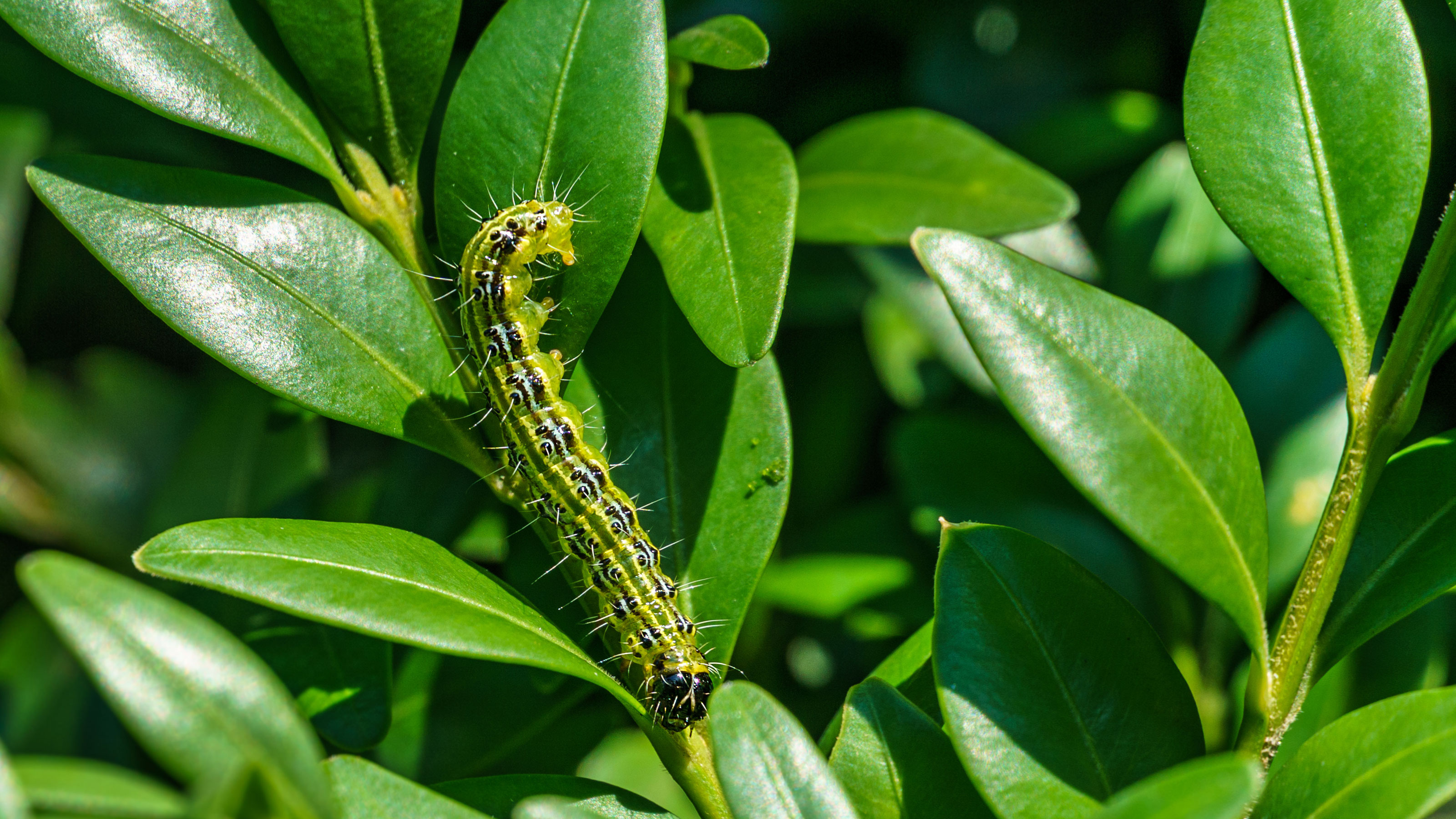

The other day, I ventured into my garden and spotted chomp marks in the plants I’ve painstakingly tried to grow this year. And as I’ve (thankfully) solved my slug problem, I knew that there was only one culprit: caterpillars. So, I’ve made it my mission to learn how to stop caterpillars eating my plants - and I’m ready to spill the beans.
Yes, given the chance, these tiny critters will destroy gardens in a matter of weeks. They’ll feast on your plants and nibble at your flowerheads, and that’s why they’re one of the garden pests you shouldn’t ignore. Especially if you come across the toxic caterpillars spreading across the UK…
But if you, like me, didn’t really know where to start with getting rid of caterpillars, you’ll be happy to know that I’ve done the legwork for you. With the help of animal and pest experts, these are all of the natural ways you can stop caterpillars from eating your plants.
1. Remove them by hand

You should never underestimate the power of your own two hands, especially when you want to stop caterpillars from eating your plants. And one of the best ways to get them away from your beloved blooms is to manually remove them.
Of course, it’s best to wear a pair of heavy-duty gardening gloves for this job, but simply picking them up and moving them to a new location can work wonders, as caterpillars will rarely travel long distances for some grub.
However, you also need to check the underside of leaves for caterpillar eggs if you opt for this method.
As Anastasia Borisevich, plant expert at Plantum, explains, ‘The real harm comes from their larvae as caterpillars often form large colonies on leaves and young shoots (sometimes in spider nests). They feed on leaves, flowers, and fruits. Several generations of these pests can be born over the span of one summer.’
So, ensure you remove both adult caterpillars and their young and repeat this process as often as necessary.
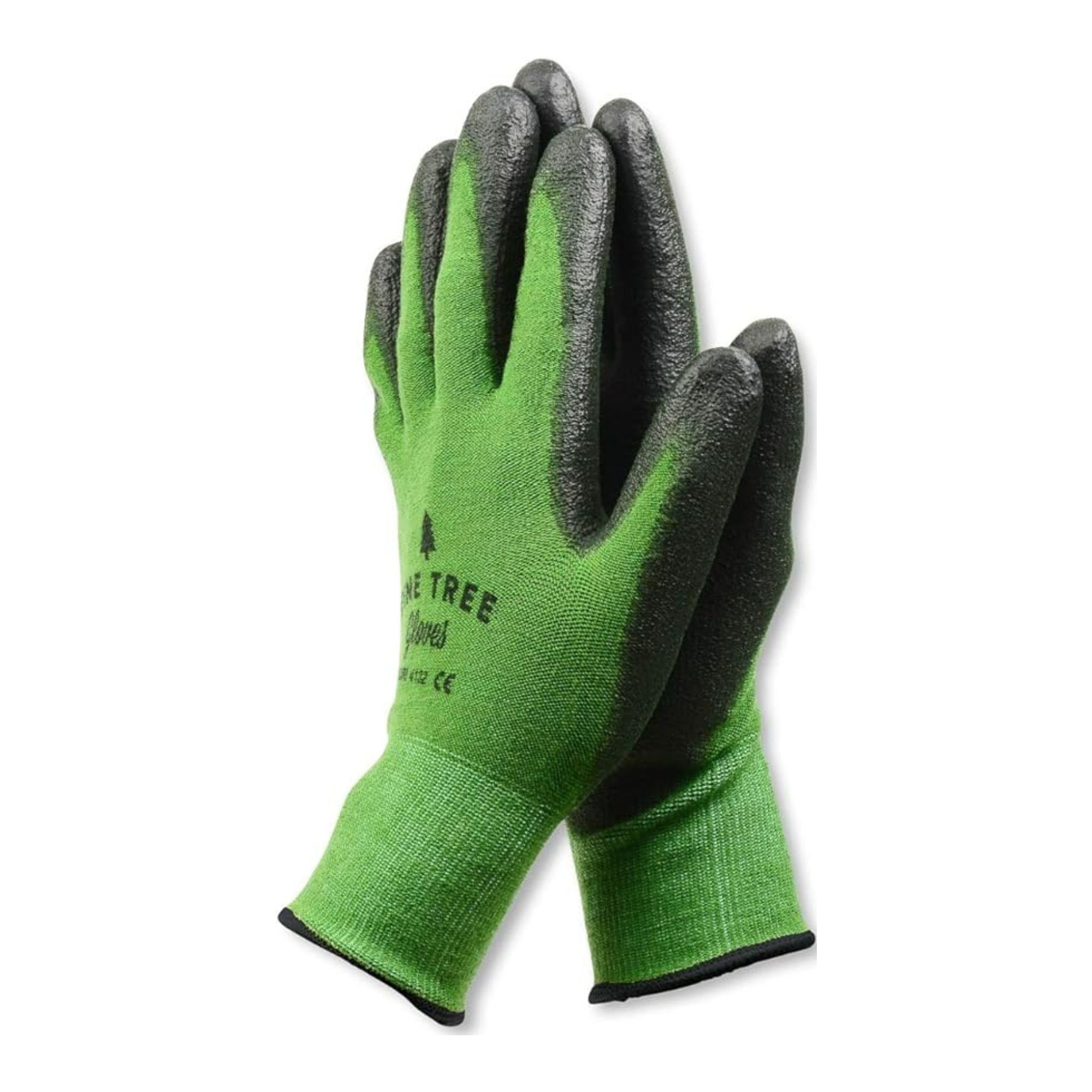
Picking caterpillars up by hand can be slimy work, so you'll thank yourself for buying these thick gardening gloves. They're washable, too.
2. Make the most of strong scents
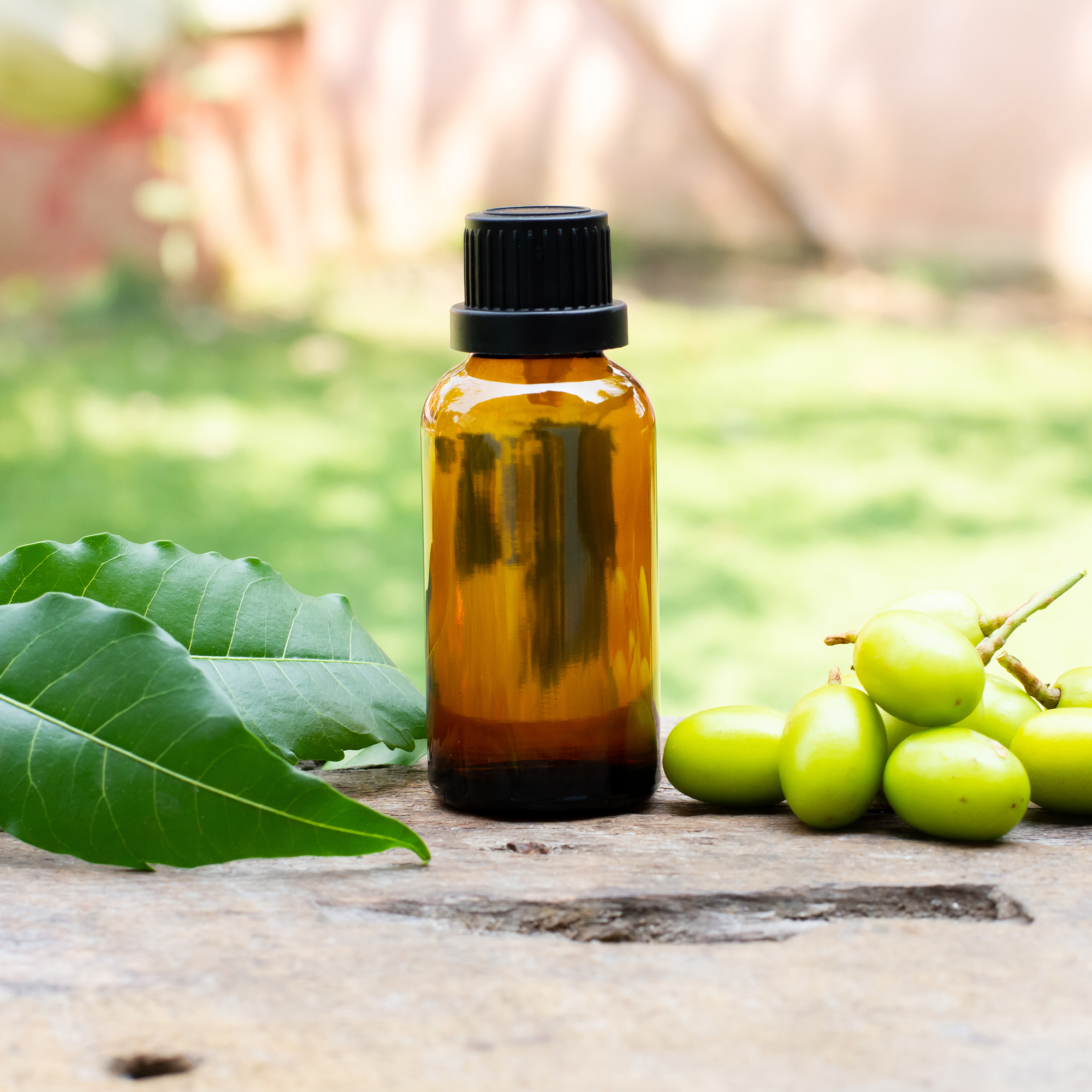
Many of the pests that have the potential to damage your garden have a heightened sense of smell, which you can use to your advantage. And by using strong scents in your garden, you can keep caterpillars away from your plants.
You can also make your own caterpillar spray using common household products if you already have them at your disposal. For example, you can use a mixture of white vinegar and water to spray onto your plants and repel caterpillars.
Alternatively, you could take inspiration from making a garlic spray to get rid of slugs and use this to keep caterpillars at bay, too.
This is echoed by Morris Hankinson, Managing Director of Hopes Grove Nurseries, who says, ‘You can also use organic sprays such as a homemade solution of water, dish soap, and garlic. These sprays are non-toxic to plants and animals but can deter caterpillars from munching on your plants.’
Just make sure you spray these at the right time, though, warns Morris. ‘Be sure to apply the spray in the early morning or evening to avoid harming insects like bees that are active during the day!’

Morris Hankinson is the founder and managing director of Hopes Grove Nurseries Ltd, the UK’s only specialist grower-retailer of hedging plants. He established the thriving business in 1992, shortly after graduating with a Commercial Horticulture Degree from Writtle College, Essex.
3. Use nematodes
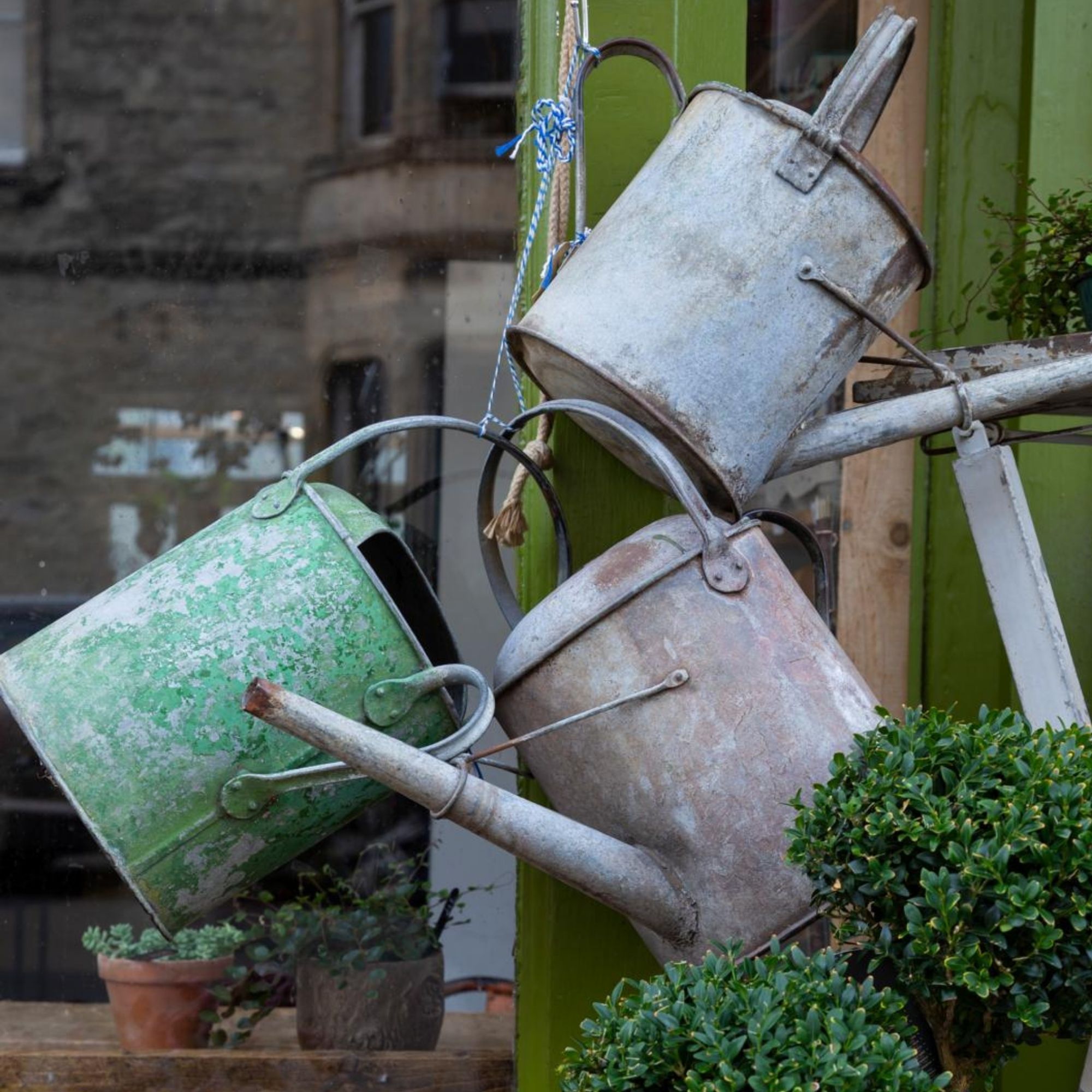
If you’re not familiar with nematodes, it’s well worth understanding how to use nematodes and how they can help keep your garden free from pests. In fact, they can also help get rid of slugs.
Matthew Martin from Nemasys Beneficial Nematodes explains, ‘Using beneficial nematodes in the garden or allotment is an effective way to control and banish caterpillar infestations without reaching for harsh chemicals and pesticides.’
‘The nematodes enter the caterpillar through natural openings on the body and release a bacterium inside the host which infects and kills the pest. Infected caterpillars retreat beneath the ground and will then be consumed and broken down by the nematodes. Once the caterpillar population has diminished, the nematodes will die off and return to the normal quantities found naturally in the soil.’
It’s easy to use nematodes to stop caterpillars eating your plants, too. Simply mix the packet with a full watering can and water your plants normally. You should then be able to relish in six caterpillar-free weeks.
Just remember that nematodes aren’t a permanent solution, and you’ll need to reapply if the caterpillars come back after those six weeks.
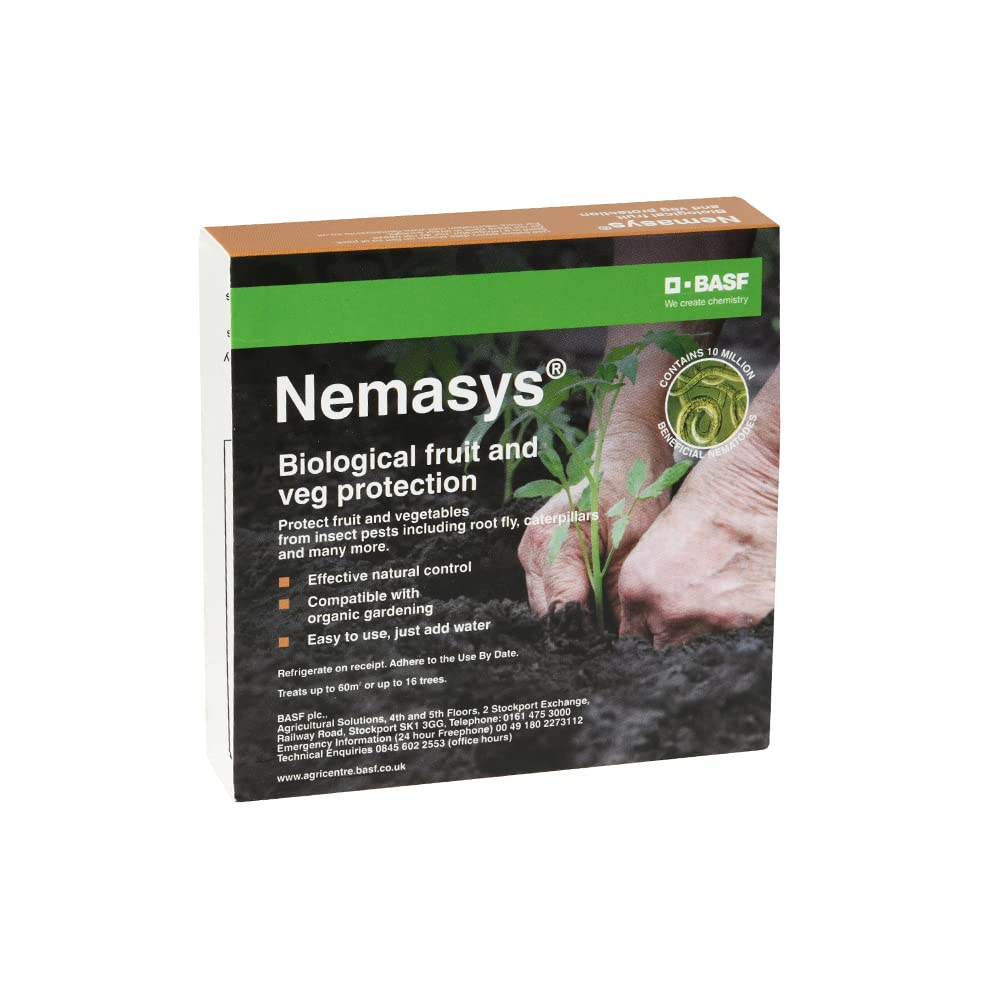
As well as protecting your plants from caterpillars, these nematodes will protect them from carrot and cabbage root flies, cutworms, onion flies, sciarid flies, gooseberry sawflies, thrips, and codling moths.
4. Encourage natural predators
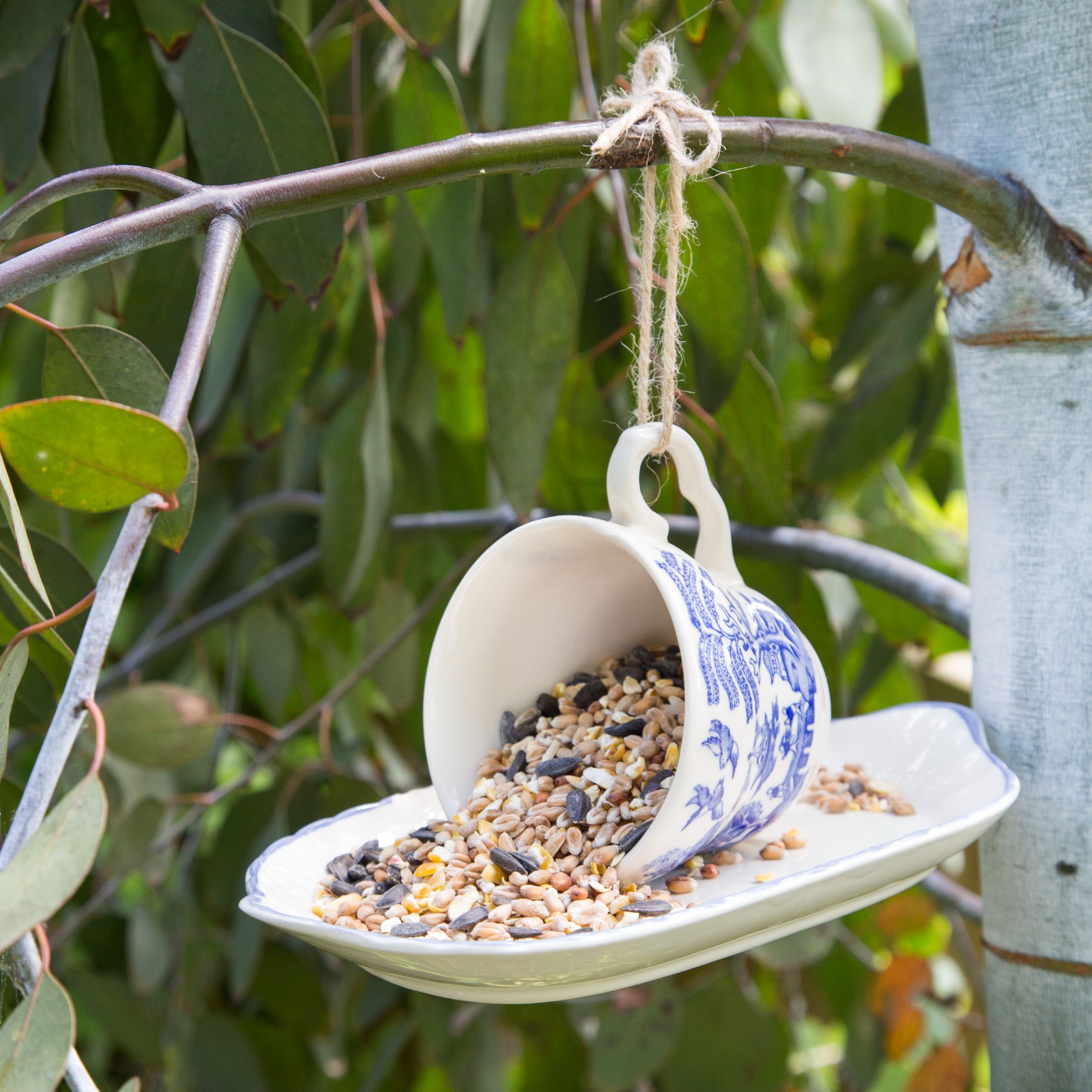
If you want a hands-off approach that will stop caterpillars eating your plants, why not let Mother Nature do it for you? By encouraging natural predators, you can not only stop caterpillars from nibbling on your peonies but also keep them out of your garden completely.
Morris explains, ‘One of the most effective ways to stop caterpillars from devouring your plants is to introduce natural predators like birds, ladybugs, and wasps into your garden as they are known to feed on caterpillars and can help keep their population in check. You can attract these predators by planting bird-friendly plants or installing bird feeders etc.’
Yes, just as you can attract birds that eat slugs, you can also attract birds that eat caterpillars. And you don’t really need to do anything except buy a bird feeder and make your garden as wildlife-friendly as possible.
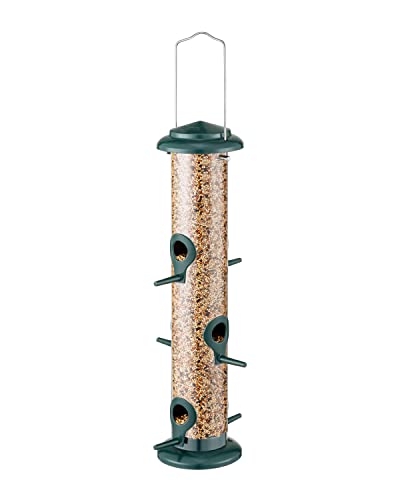
Perfect for even the smallest of outdoor spaces, this feeder should encourage caterpillar-eating birds into your garden.
5. Choose plants for trap cropping
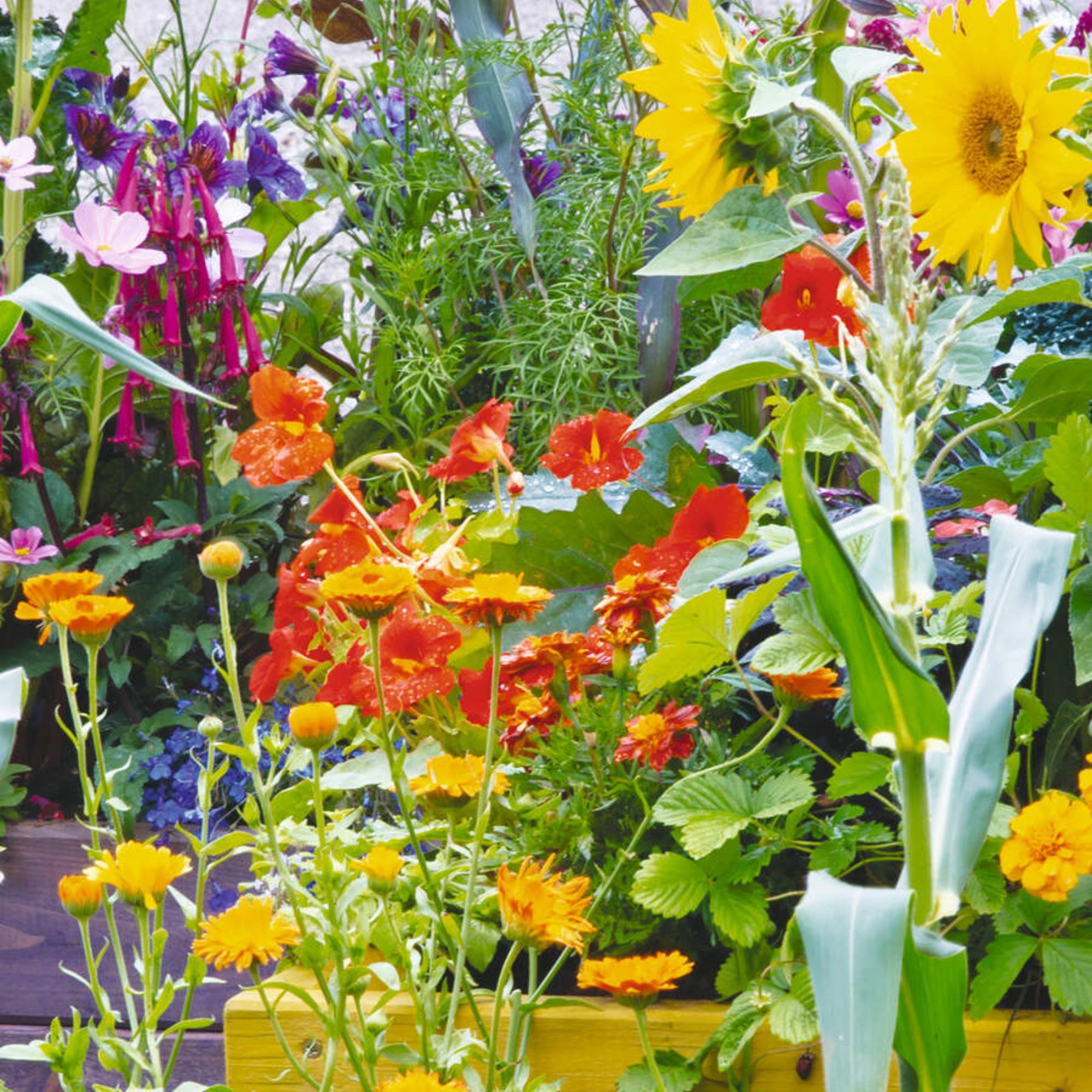
We’ve often discussed trap cropping in terms of the plants that slugs love - but it can also be applied to caterpillars. The idea? To plant sacrificial plants that caterpillars love to keep them away from the plants that you love.
By planting sweet, high-nectar fruit plants or surrounding your beloved dahlias with caterpillar-loving plants like nasturtiums, you can continue to feed your caterpillars without letting them eat the plants you want to keep alive.
After all, caterpillars can be valuable additions to a natural ecosystem, so you might want to keep some in your garden.
Alternatively, you could opt for the opposite method and add the plants that caterpillars hate around the plants you want to keep safe. Morris says, ‘Certain herbs, like dill, sage, and thyme, have strong scents that deter caterpillars. You can plant these herbs around your garden or near vulnerable plants to create a protective barrier.;
He also adds, ‘Companion planting with flowers like marigolds can also help as these flowers release a scent that can be unpleasant to caterpillars.’
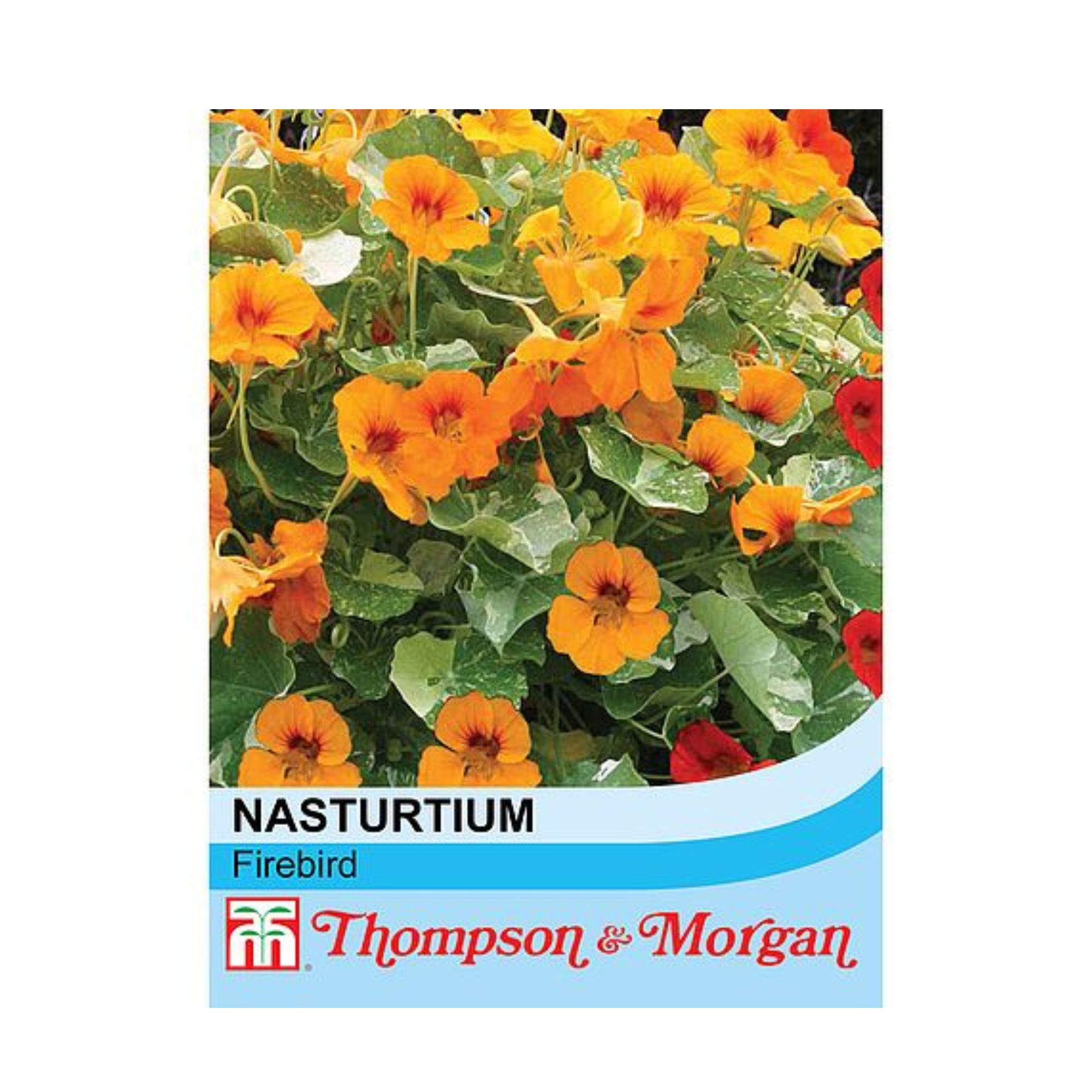
Caterpillars love nasturtiums, and planting some around the plants you want to protect is the perfect way to trap crop them.
6. Tidy your garden
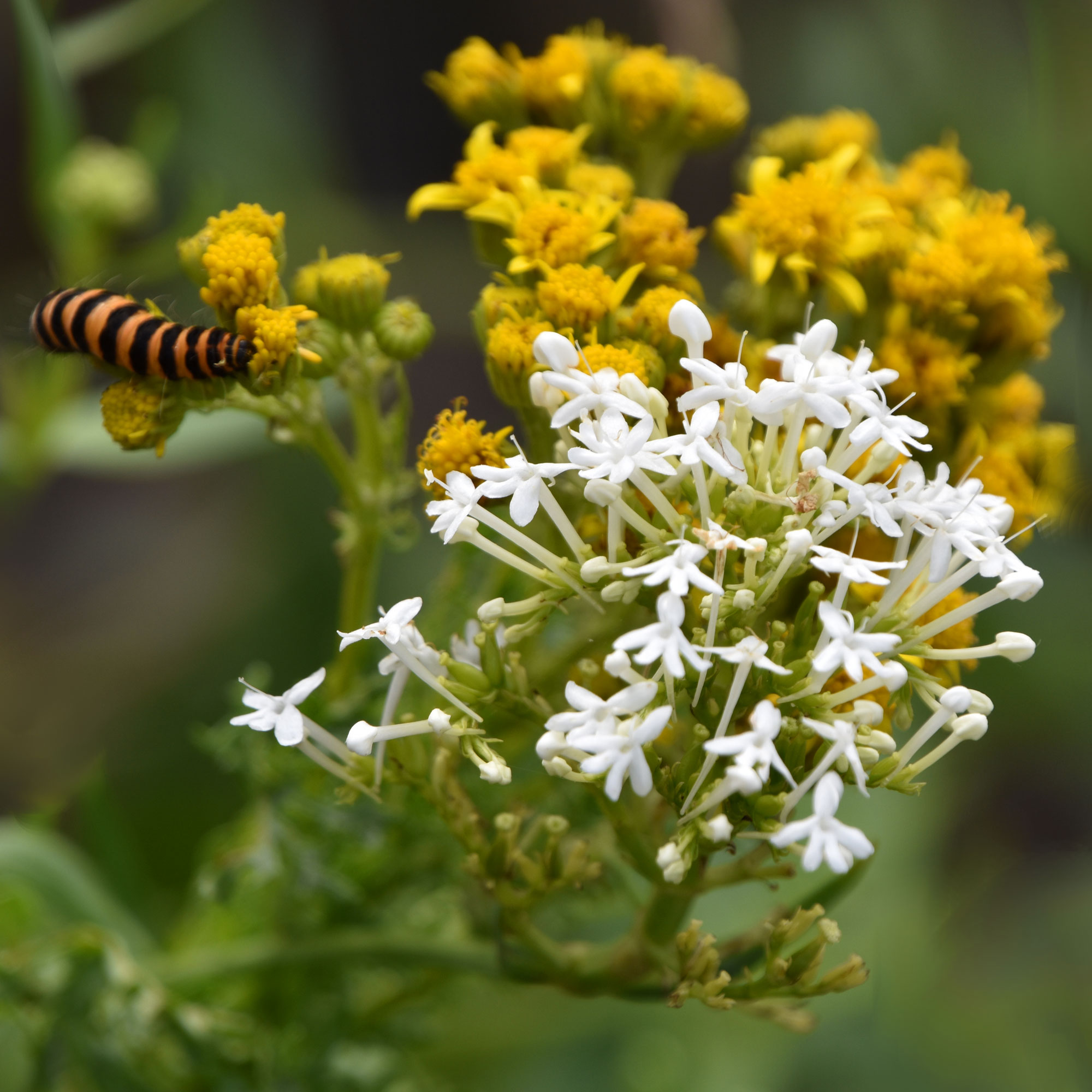
As well as venturing into your garden for a hearty meal, caterpillars will also make their way into your garden for shelter and to find somewhere to hide their eggs. With this in mind, it might be time to finally tackle your overgrown garden.
By tidying up your space and removing any potential hiding spots, you can make your garden less desirable to these critters. In an ideal world, this would also stop the caterpillars from eating your plants.
So, what can you do? Well, while it can be enticing to leave grass clippings on your lawn, it’s best to remove any debris or any piles of organic matter from your garden. This also includes picking up any fallen leaves and cutting any overhanging branches.
Of course, you don’t have to remove your compost heap as the smell of it should keep them at bay.
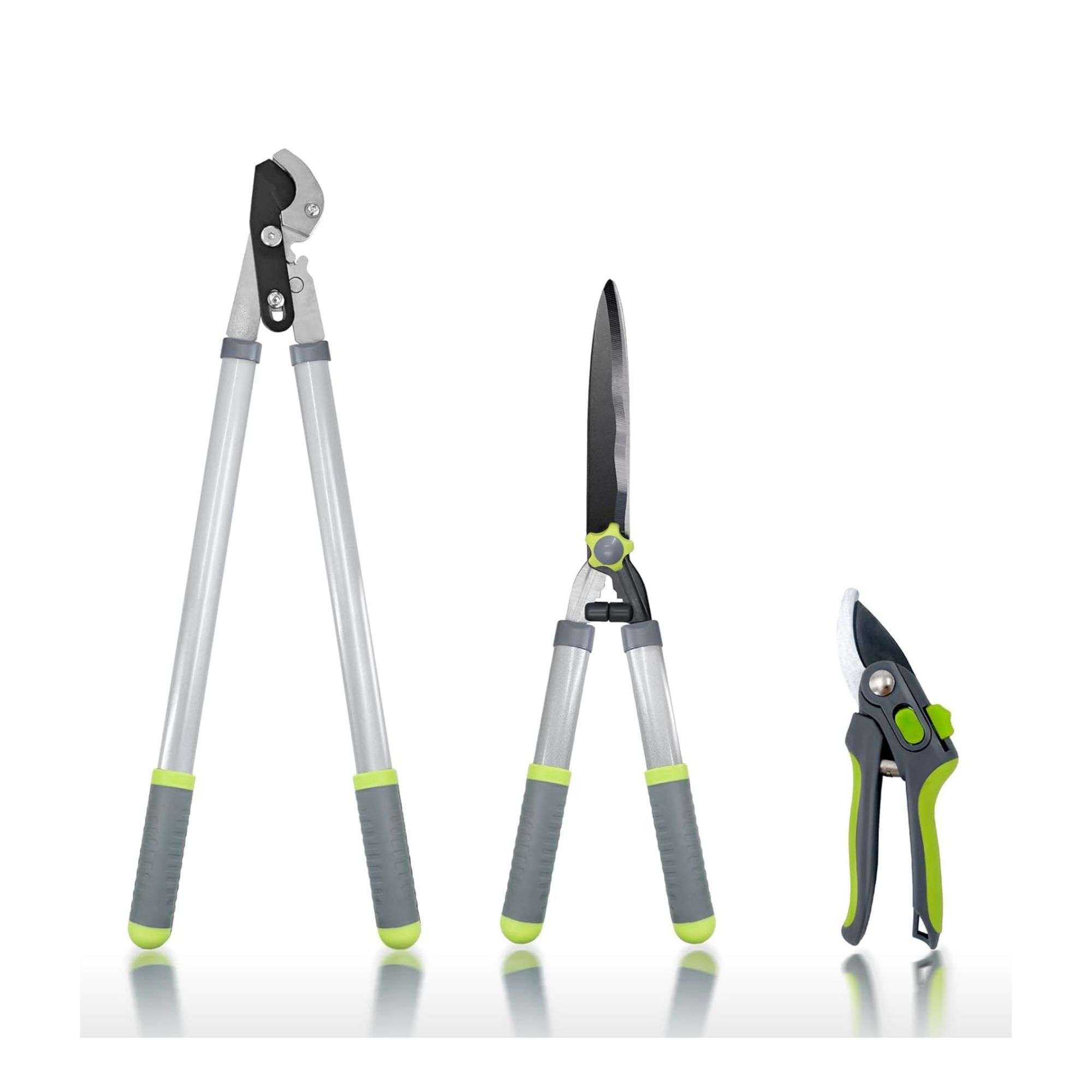
If you need some tools to tackle your overgrown garden, this set can help you out. The pruners even come in different sizes to tackle different areas.
FAQs
What attracts caterpillars to your garden?
Caterpillars are primarily attracted to food and shelter as they scour gardens trying to find the perfect place to lay their eggs. And they always choose somewhere that has food on tap for when their eggs eventually hatch.
So, caterpillars will be attracted to your garden if you have delicious plants for them to eat and foliage to hide their eggs under.
That’s why it’s so important to make your garden as unattractive as possible by keeping it tidy and using natural sprays to make your plants less desirable.
What plants do caterpillars eat most?
Caterpillars are known to eat the likes of nasturtiums, foxgloves, red clover, birds-foot trefoil, and marjoram. And while they will happily eat the whole of your plant, they particularly love the leaves and will largely focus their attention on the foliage rather than the flowerheads or seeds.
Knowing the plants that caterpillars eat most can help you out immensely. You can either avoid planting them in your garden completely to make your space less desirable, or you could opt to trap crop the plants you want to keep safe by sacrificing the plants that caterpillars love.
So, there you have it! And I’m going to be trying all of these techniques to stop caterpillars eating my plants…
Get the Ideal Home Newsletter
Sign up to our newsletter for style and decor inspiration, house makeovers, project advice and more.

Lauren Bradbury has been the Content Editor for the House Manual section since January 2025 but worked with the team as a freelancer for a year and a half before that. She graduated with a Bachelor’s degree in English and Creative Writing from the University of Chichester in 2016. Then, she dipped her toe into the world of content writing, primarily focusing on home content. After years of agency work, she decided to take the plunge and become a full-time freelancer for online publications, including Real Homes and Ideal Home, before taking on this permanent role. Now, she spends her days searching for the best decluttering and cleaning hacks and creating handy how-to guides for homeowners and renters alike, as well as testing vacuums as part of her role as the Ideal Home Certified Expert in Training on Vacuums, having spent over 110 hours testing different vacuum models to date!
-
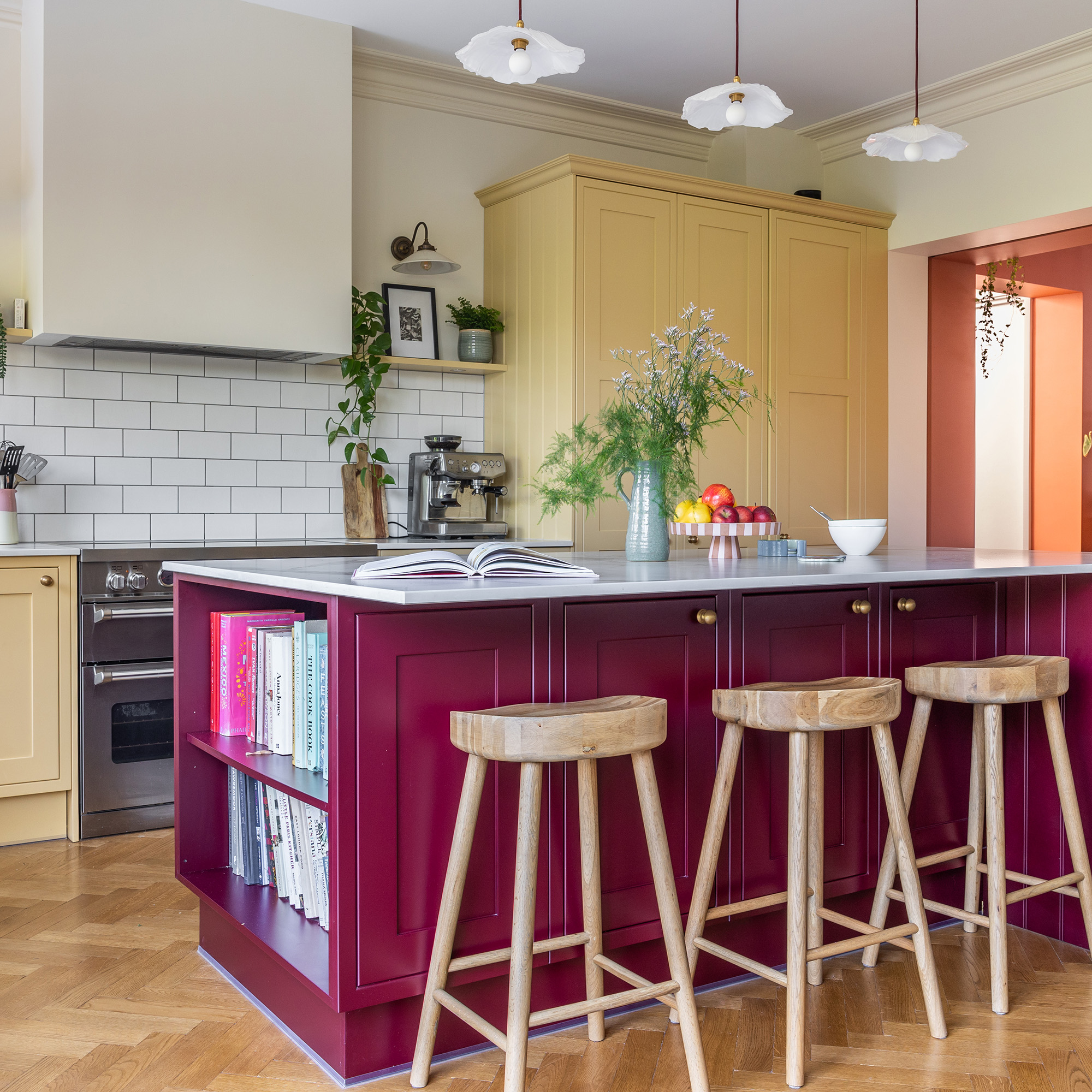 A top-to-bottom renovation has turned this Edwardian house into a lovely family home
A top-to-bottom renovation has turned this Edwardian house into a lovely family homeWith a few considered structural changes, this period house has been turned into a family home and has created a sanctuary for years to come
By Maxine Brady
-
 How to heat a conservatory
How to heat a conservatory7 practical options to consider for year-round comfort
By Amy Reeves
-
 Blueberry is the ‘it’ blue this spring - but these are the 3 colours you should never pair with it, according to experts
Blueberry is the ‘it’ blue this spring - but these are the 3 colours you should never pair with it, according to expertsAvoid overpowering your space by avoiding these three bold colours
By Kezia Reynolds
-
 Shoppers can’t get enough of The Range’s lemon tree, but I’ve found an even cheaper bestseller at B&Q - it’s perfect for a Mediterranean look
Shoppers can’t get enough of The Range’s lemon tree, but I’ve found an even cheaper bestseller at B&Q - it’s perfect for a Mediterranean lookWelcome the summer with this glorious fruit tree
By Kezia Reynolds
-
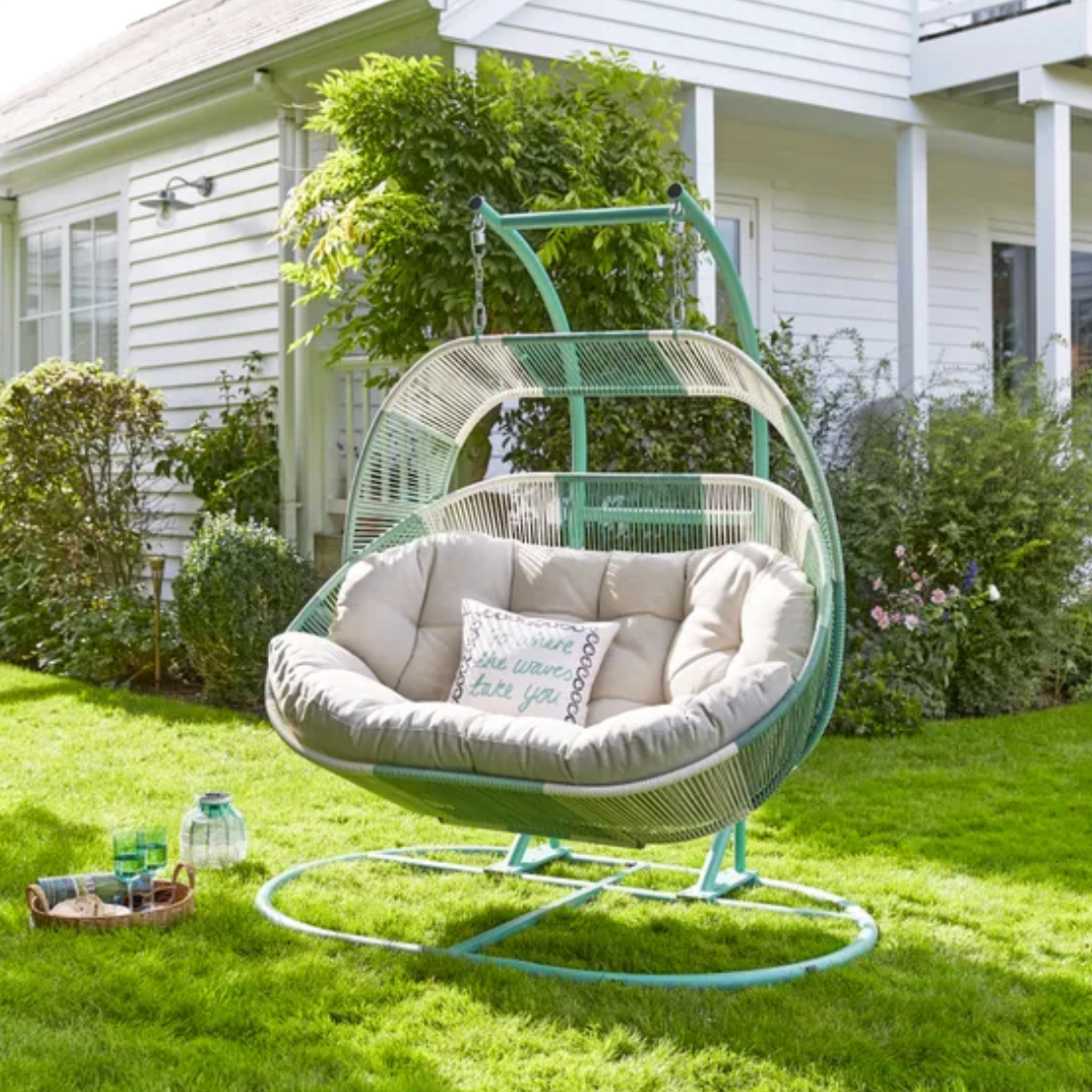 I'm a stylist with an eye for expensive-looking high street finds – these 6 garden furniture pieces at Dunelm are on my radar
I'm a stylist with an eye for expensive-looking high street finds – these 6 garden furniture pieces at Dunelm are on my radarThese pieces all look more than their price tag
By Laurie Davidson
-
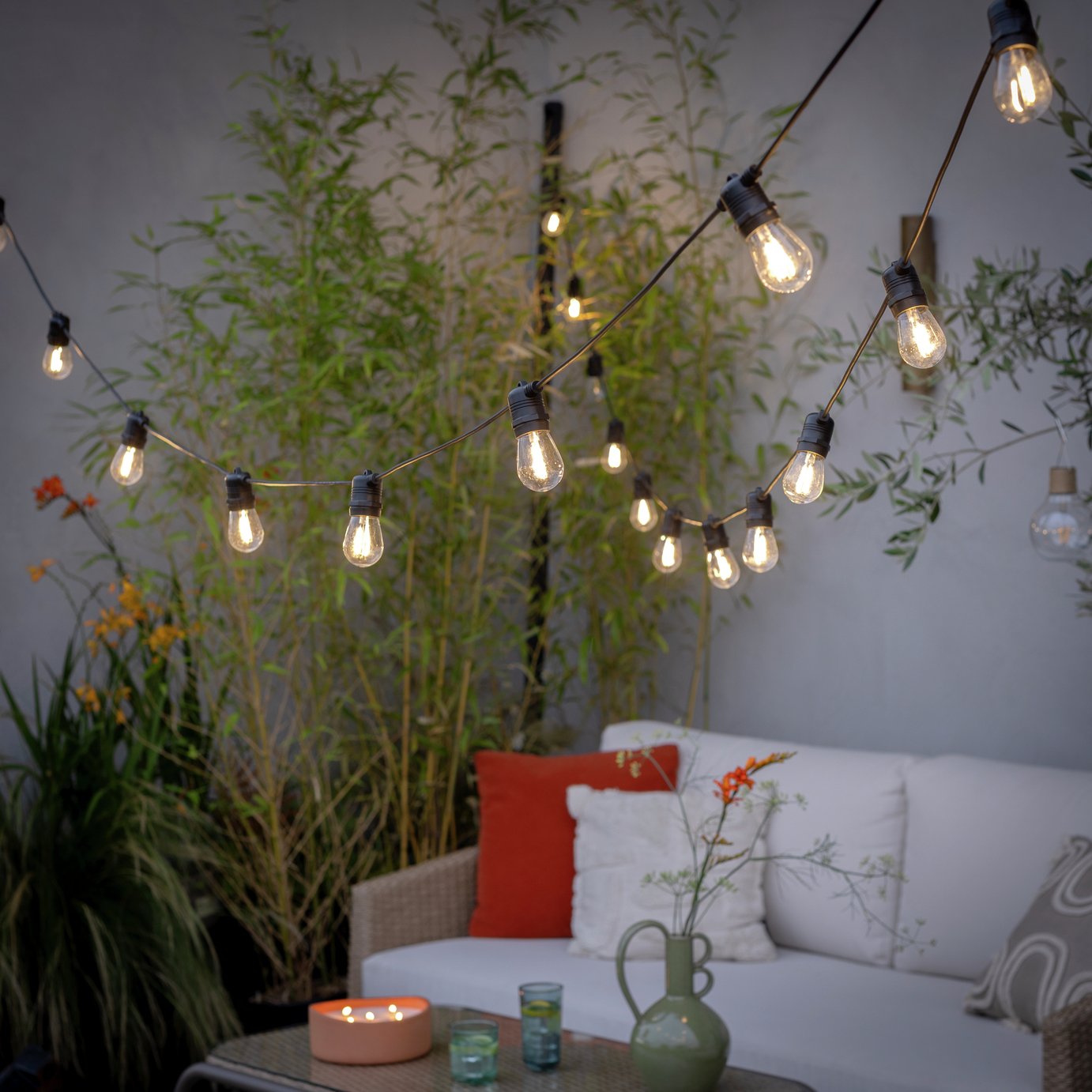 The 6 outdoor lights from Habitat that I'm choosing between to make my outdoor space look more expensive this summer
The 6 outdoor lights from Habitat that I'm choosing between to make my outdoor space look more expensive this summerI couldn’t believe some of the prices
By Ellis Cochrane
-
 Aldi is launching a £200 day bed with four different features - its sleek design is suited to the whole family
Aldi is launching a £200 day bed with four different features - its sleek design is suited to the whole familyYou don't want to miss out on this Specialbuy
By Kezia Reynolds
-
 I’m seeing pastel garden furniture at all my favourite brands this spring, but QVC’s sorbet collection impressed me the most
I’m seeing pastel garden furniture at all my favourite brands this spring, but QVC’s sorbet collection impressed me the mostFresh pastel shades are a great way to liven up your outdoor space
By Kezia Reynolds
-
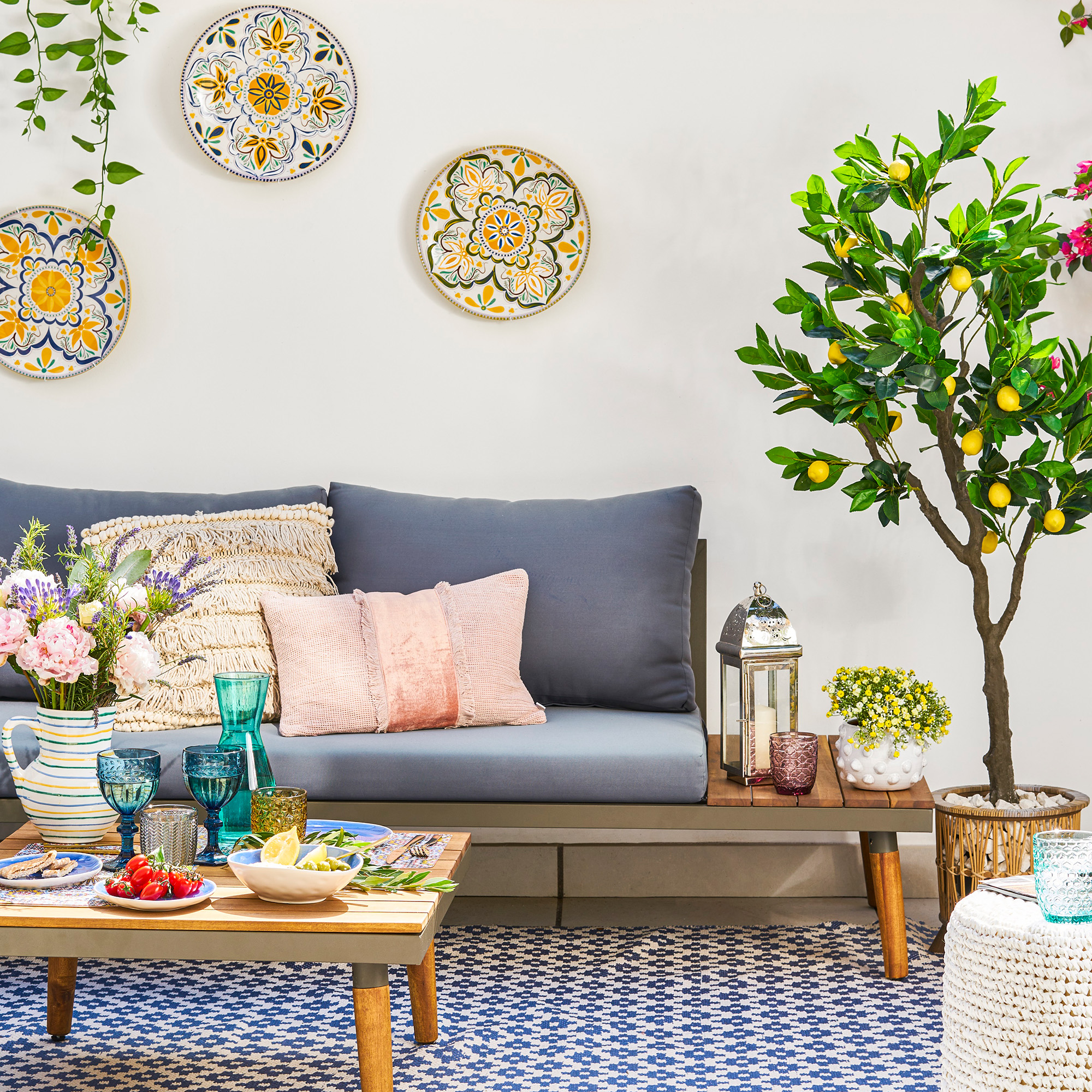 I spent the afternoon looking through Wayfair's garden sale – these are the 6 pieces I'm buying immediately for summer
I spent the afternoon looking through Wayfair's garden sale – these are the 6 pieces I'm buying immediately for summerThese are my must-have garden buys from the sale
By Holly Reaney
-
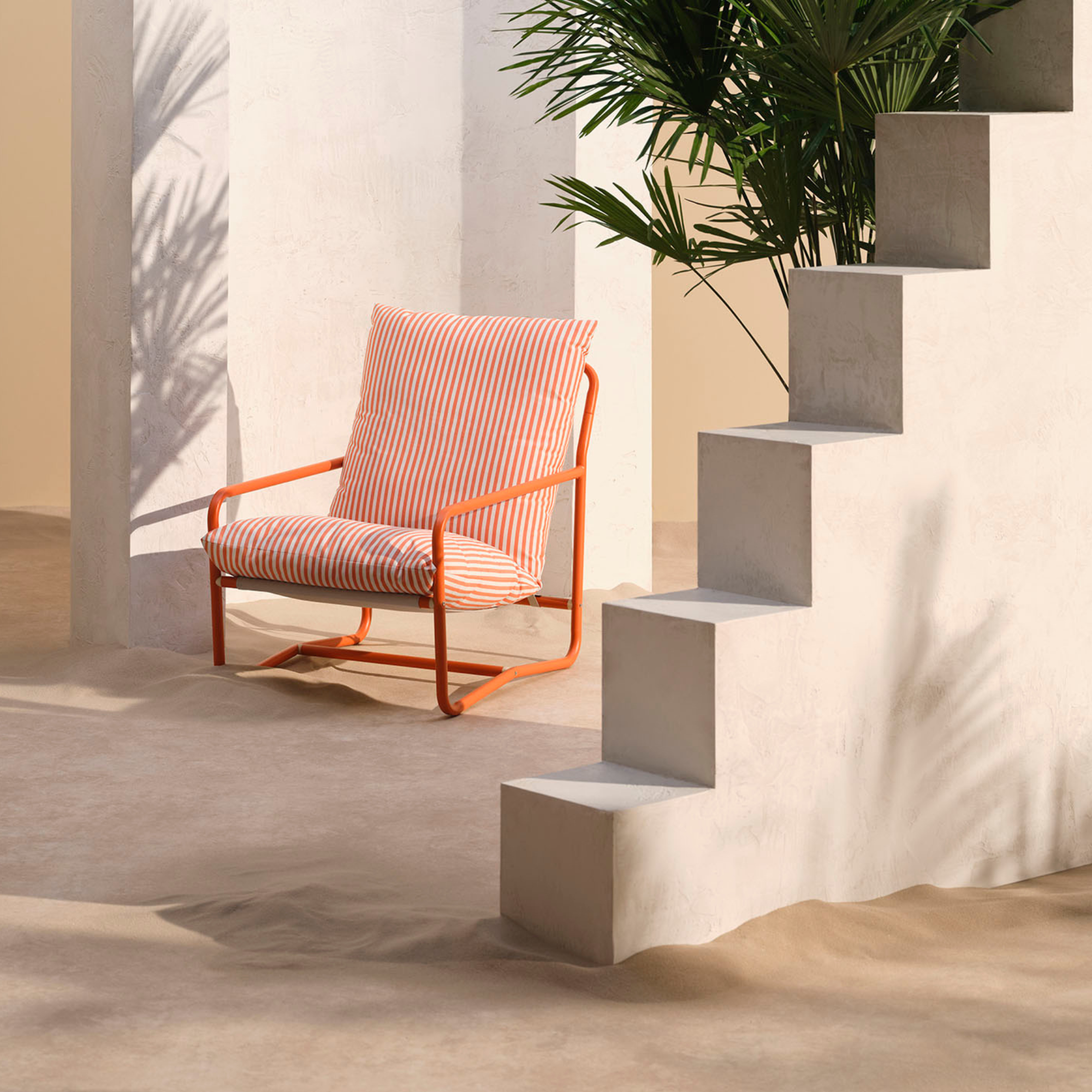 I’ve found the perfect alternative to John Lewis’ sold-out striped garden chair – and you won’t believe where it's from
I’ve found the perfect alternative to John Lewis’ sold-out striped garden chair – and you won’t believe where it's fromJohn Lewis' Sling Garden Chair is one of the most stylish pieces of garden furniture I'd seen – until I tracked down this QVC lounge chair...
By Kezia Reynolds
-
 Lidl is selling a smart tiered planter that will unlock extra planting space in a tiny garden or balcony
Lidl is selling a smart tiered planter that will unlock extra planting space in a tiny garden or balconyWhy I've been eyeing this planter up for my tiny garden
By Kezia Reynolds